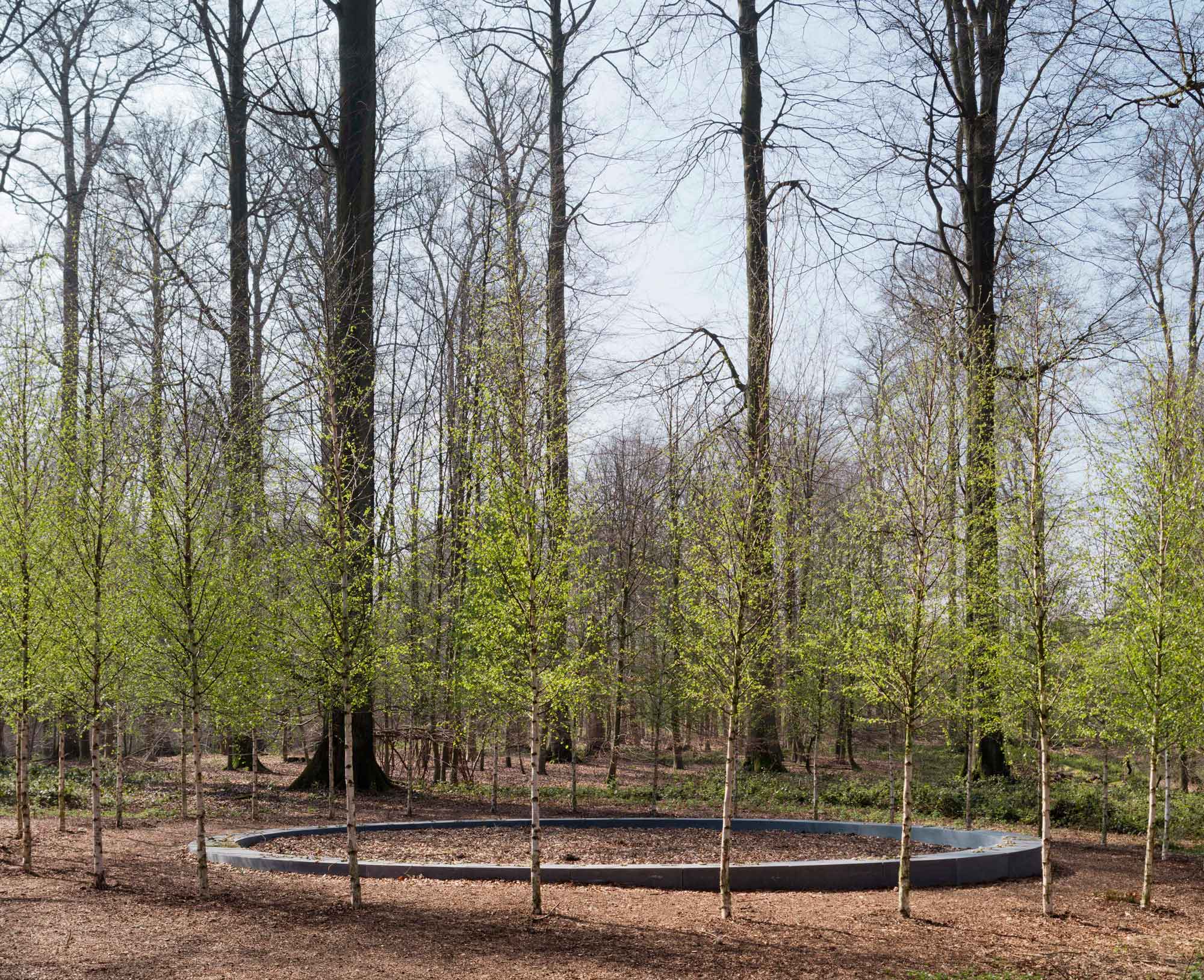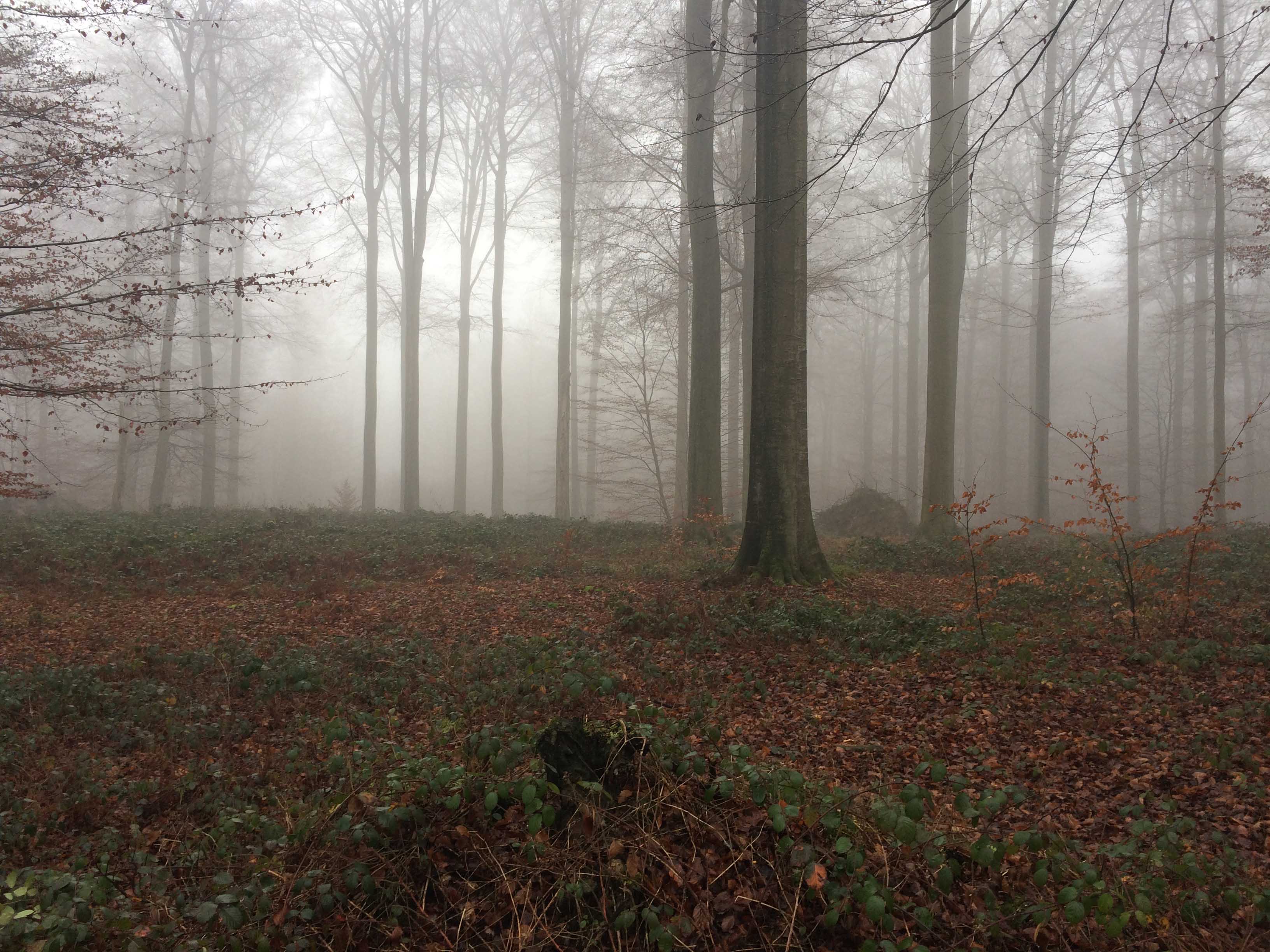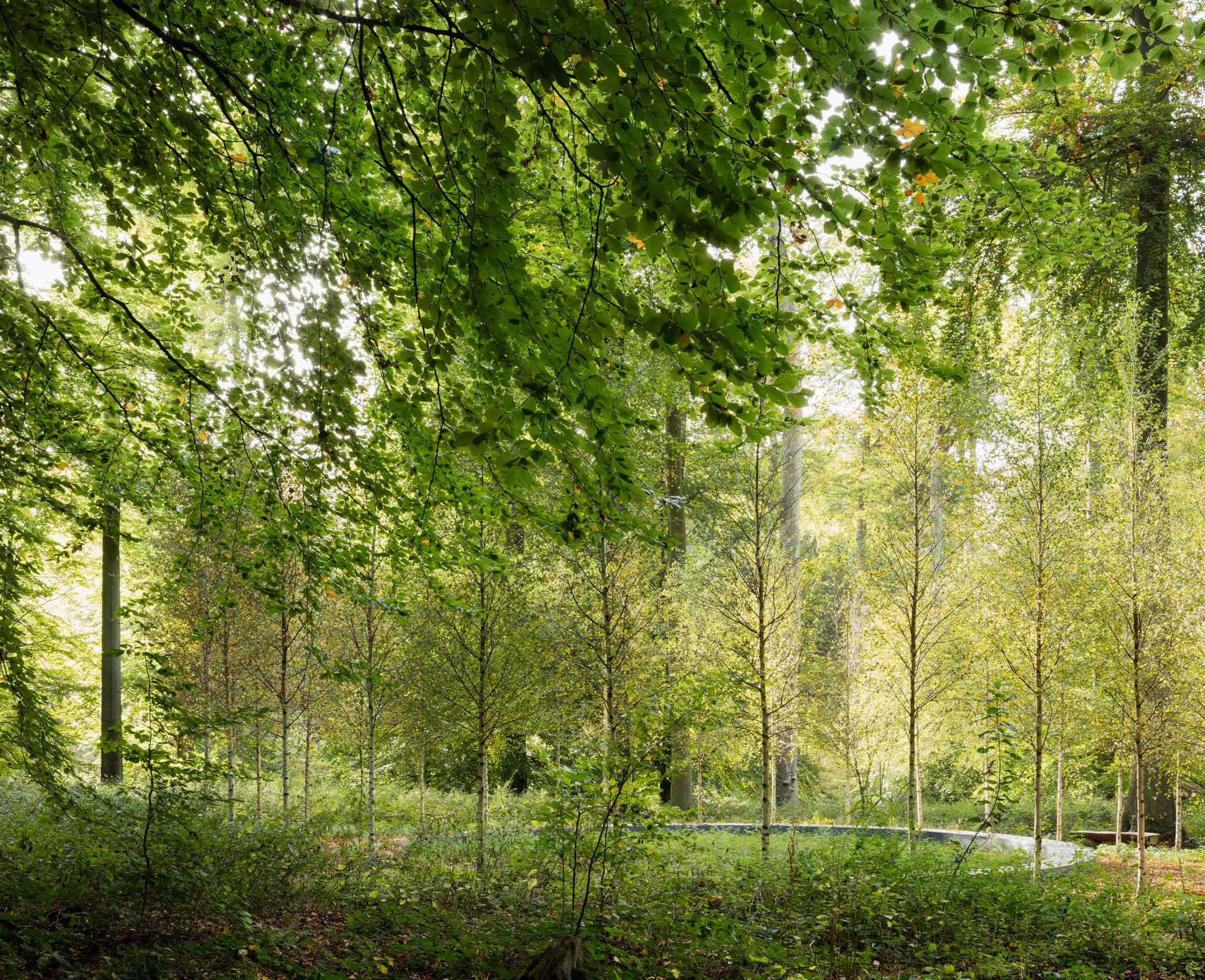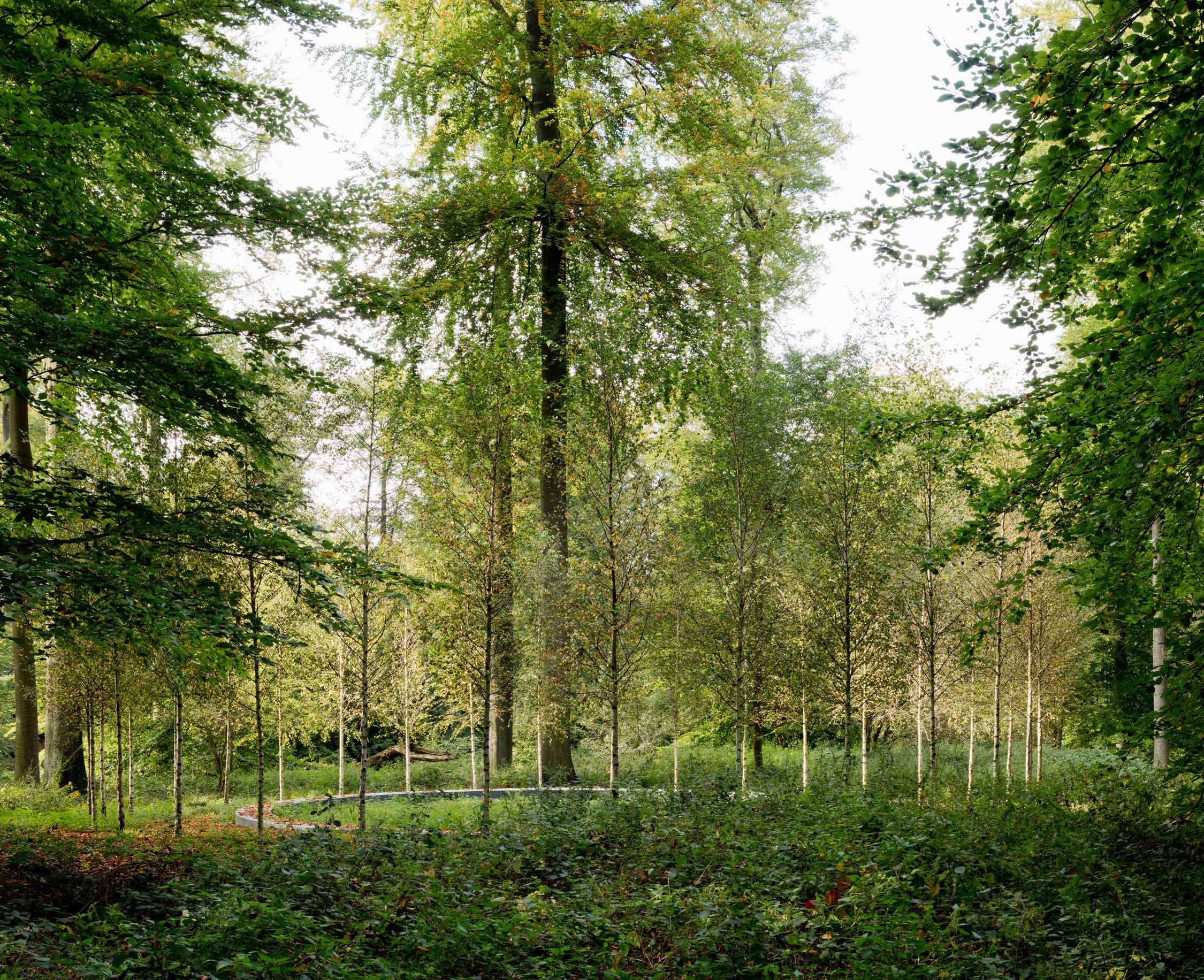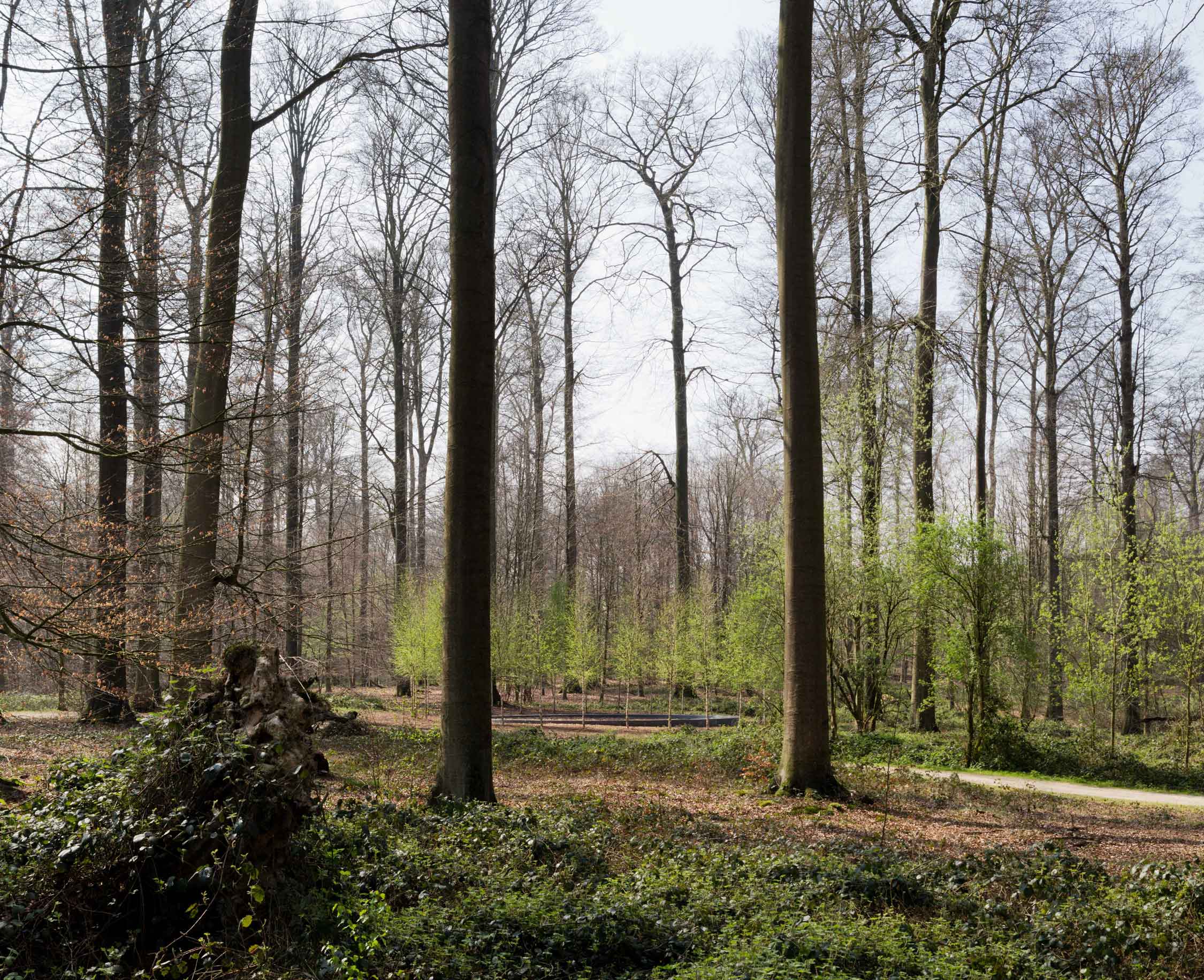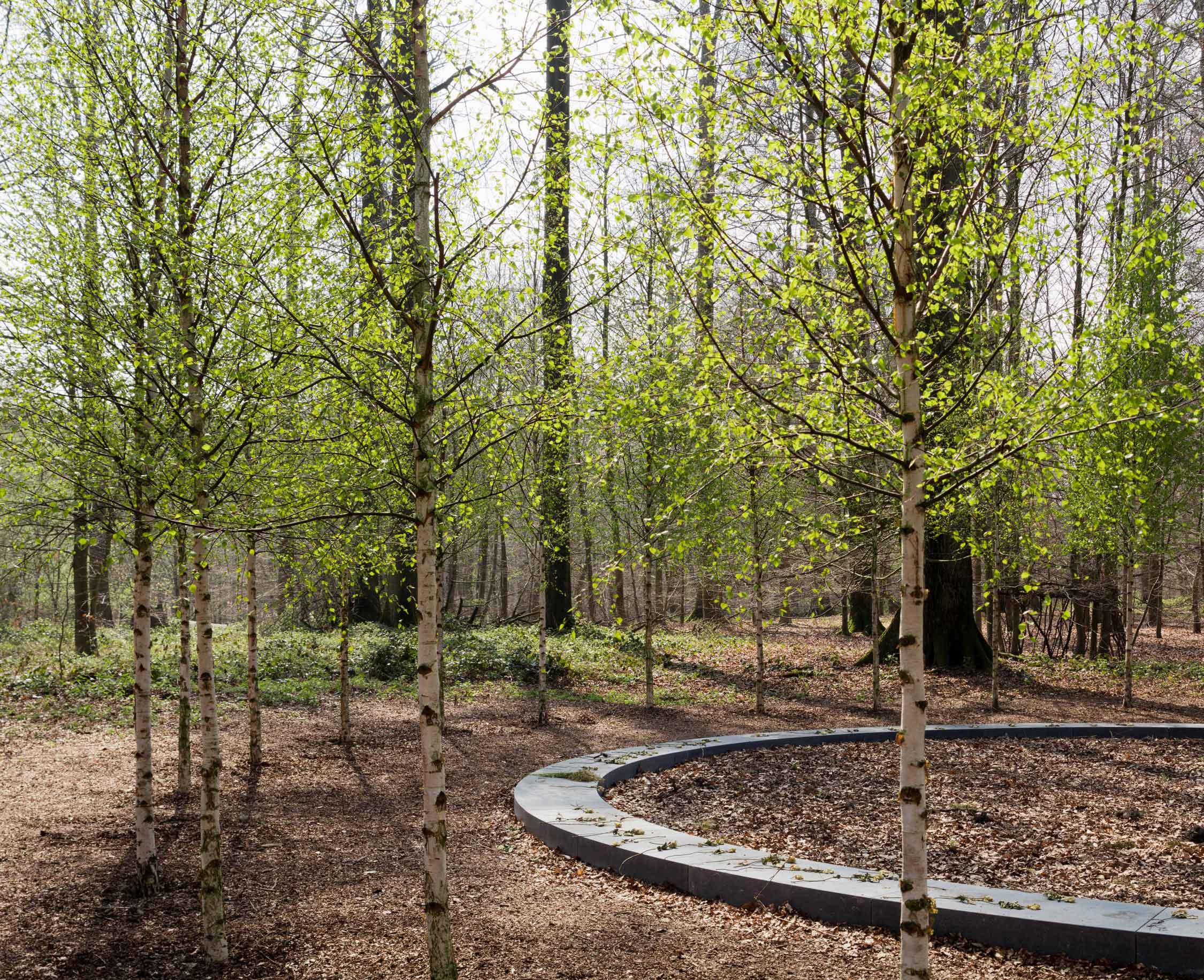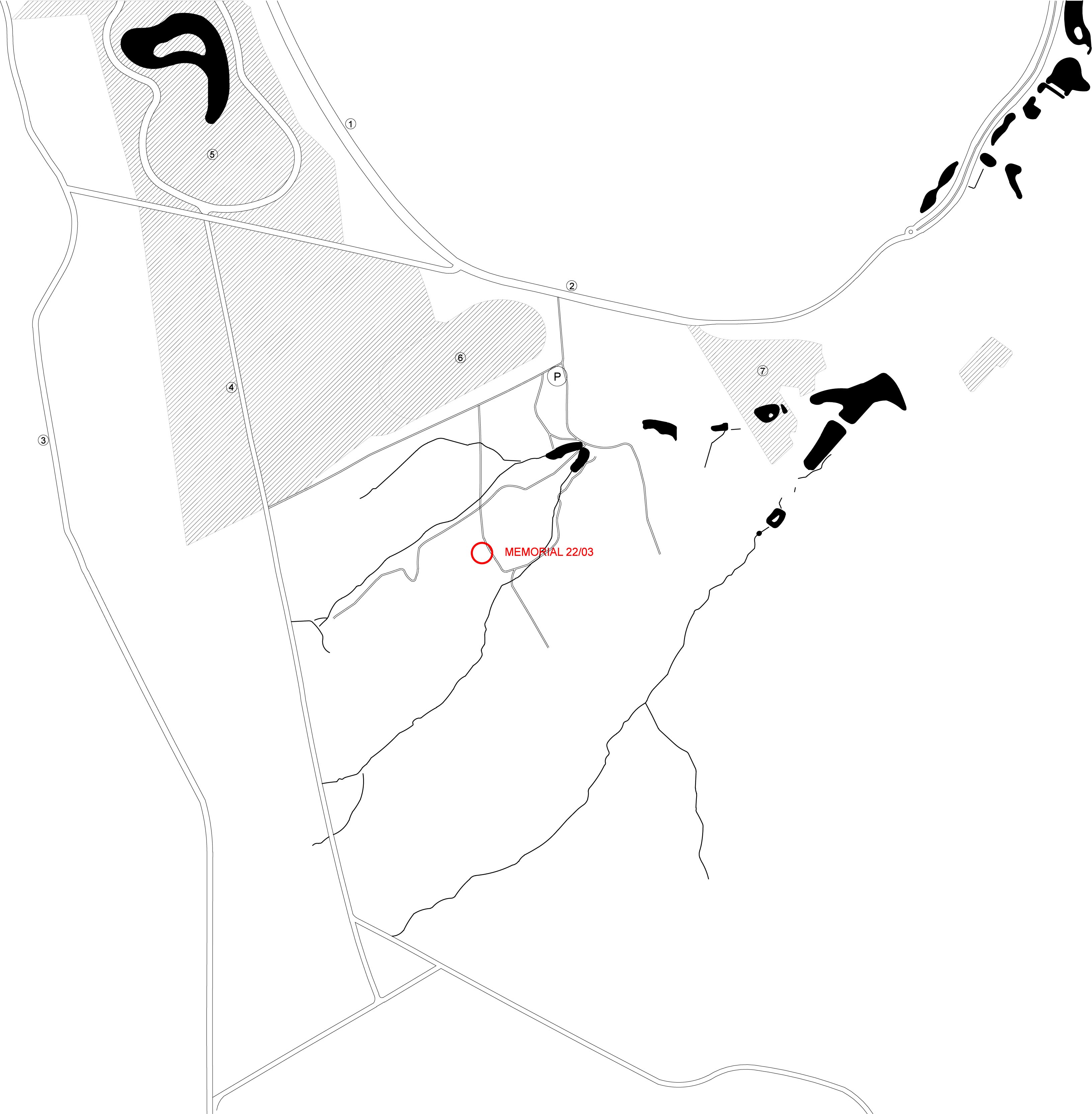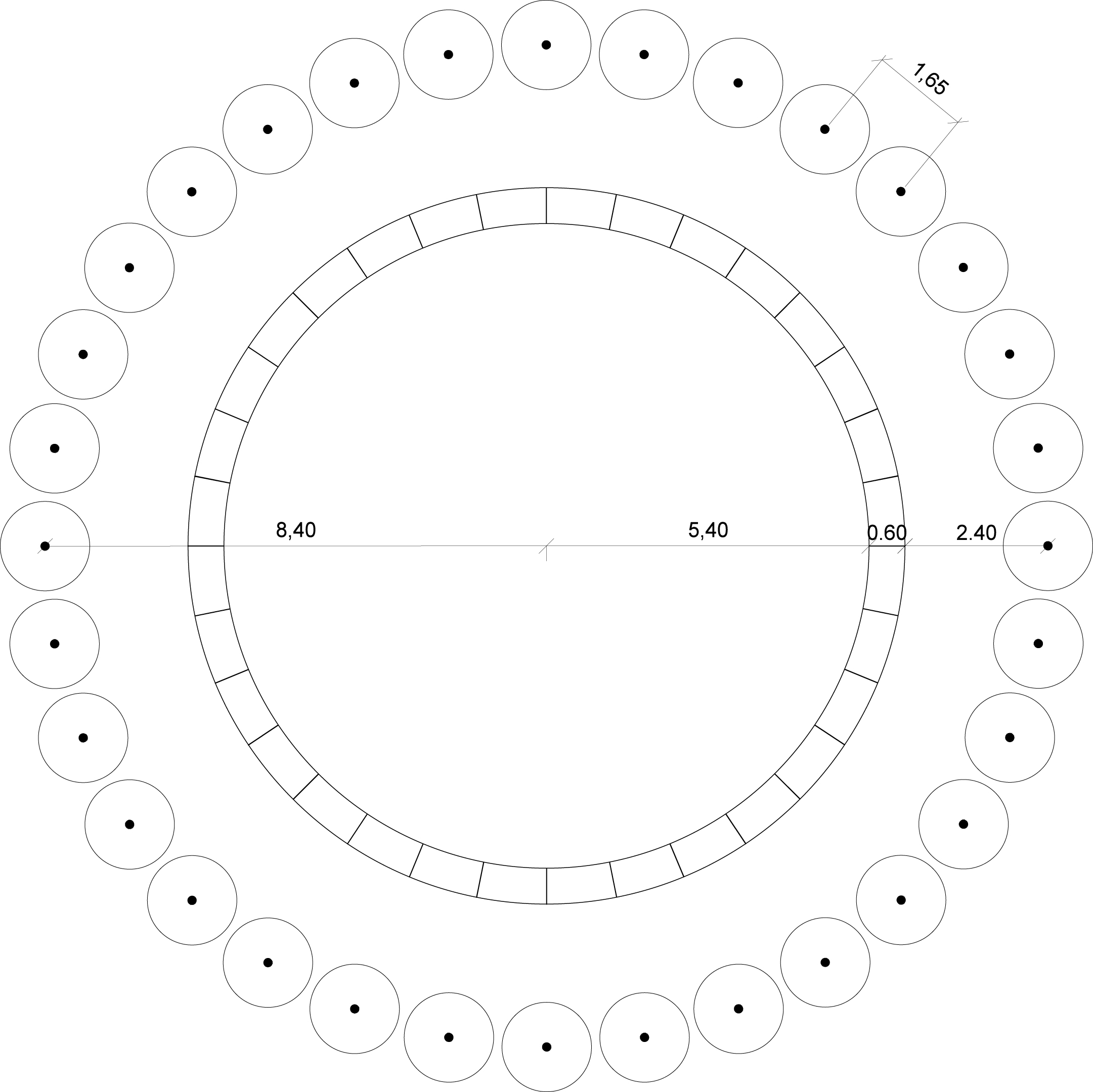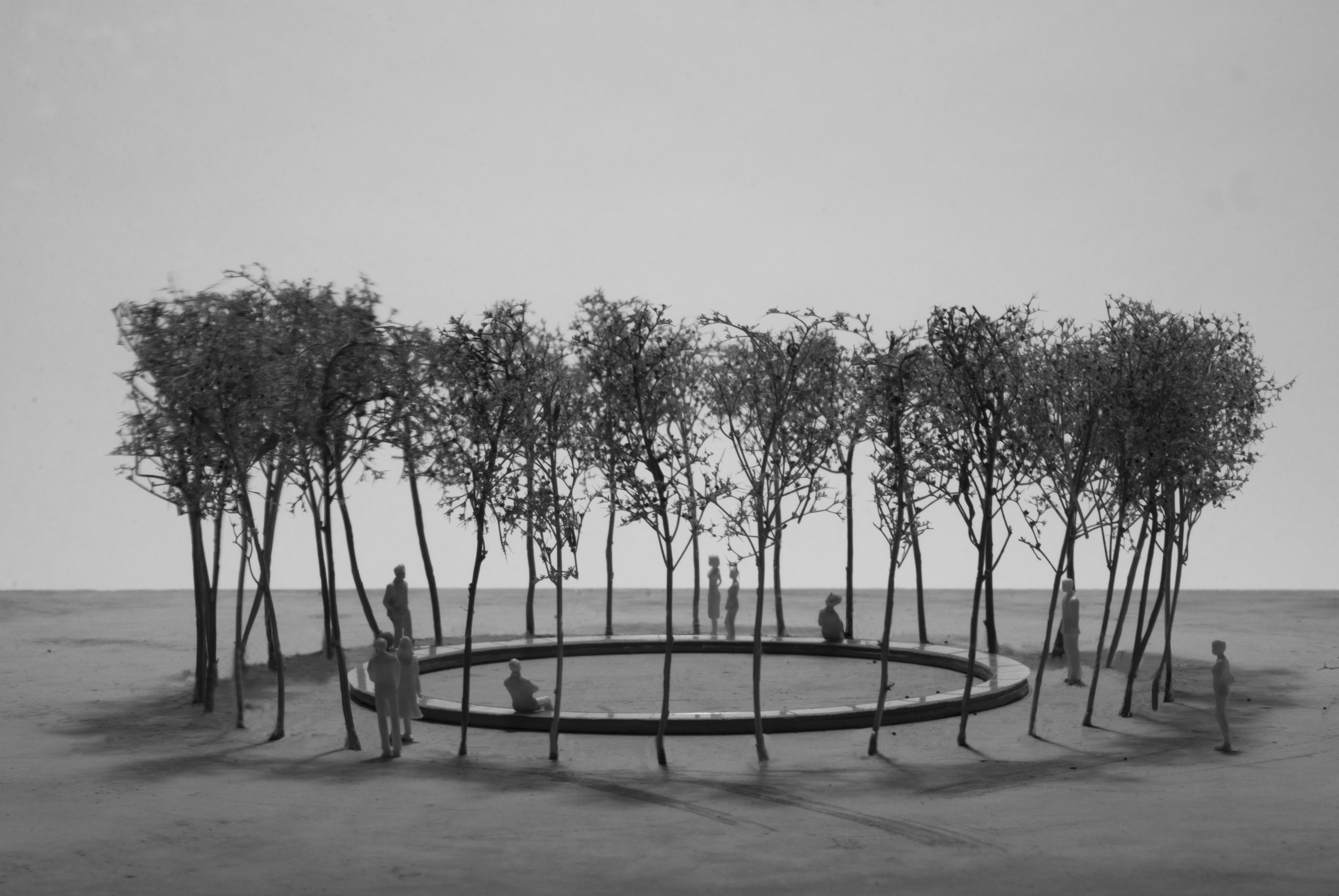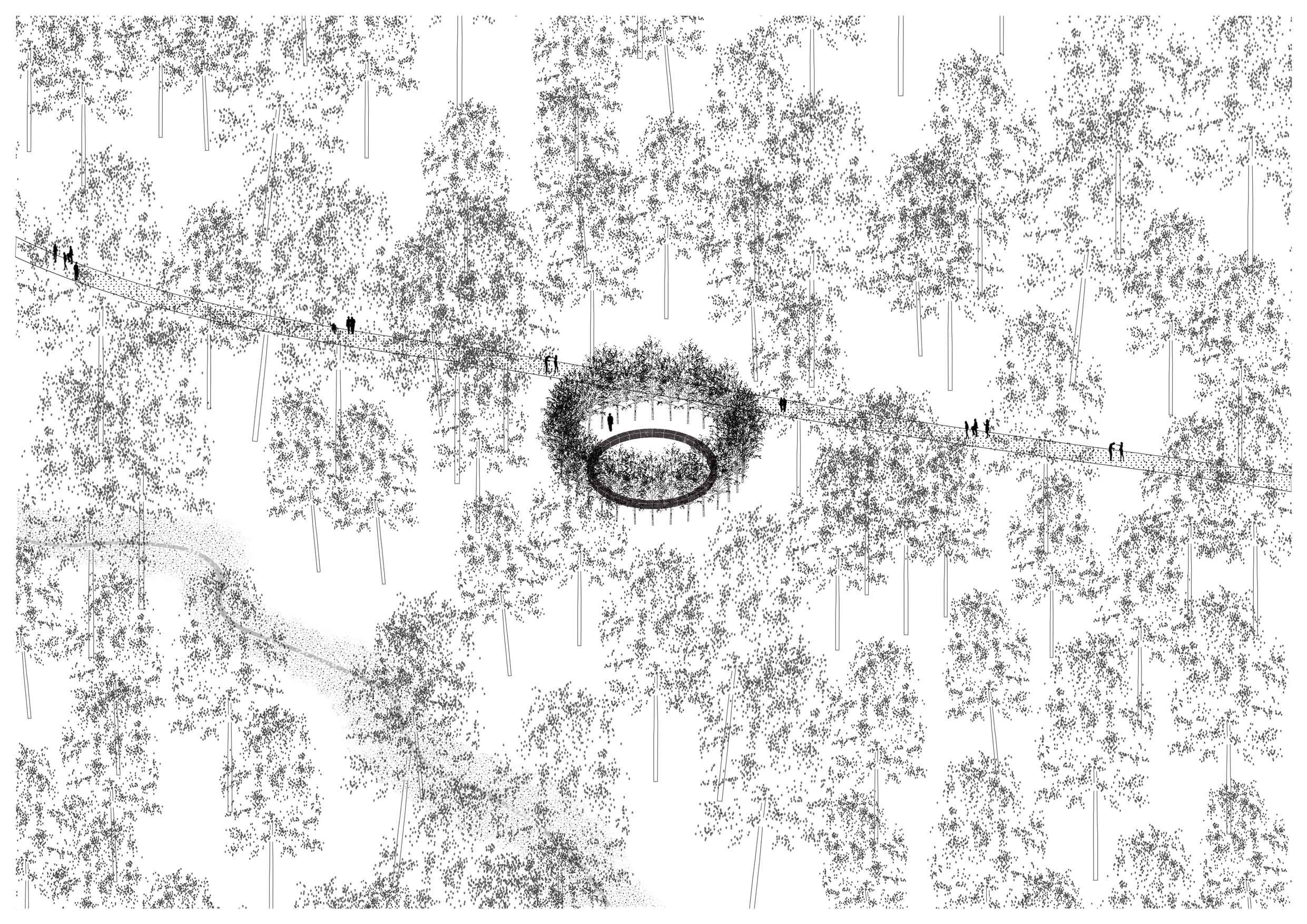Previous state
On 22 March 2016, thirty-two people were killed in terrorist attacks that were carried out in two different parts of Brussels, the airport and the Maalbeek metro station. In order to mark these attacks, the City Council decided to create a memorial in commemoration of the victims and, accordingly, called for entries in an international contest. The winning project, presented by the Bureau Bas Smets, suggested placing the monument in a place where there was already a long tradition of locating memorials, namely the Sonian forest of tall beech trees planted at the end of the eighteenth century and adjoining the conurbation of Brussels. With its intact undergrowth, the Sonian forest was considered to be the most appropriate place for the victims and their families to find some moments of calm and contemplation. After meticulous exploration of the forest, a natural clearing was found on a small rise surrounded by majestic beech trees, which meant that there was no need to cut down any tree to bring the project to fruition.Aim of the intervention
The proposal of the Ministry of the Environment was to plant thirty-two trees, each one in the name of a person killed in the attacks. In order to proceed in keeping with this principle, the authors of the project worked closely with the association of victims in order to find answers to the important questions that must be asked when approaching any endeavour with memorial functions. How is it possible to commemorate the unfathomable? How might a place be created where people affected by the events might find some repose and peace? The desire was to produce a sensitive space that would nurture intimacy, while also being vital and resilient, and hidden away but without being inaccessible. In brief, it was to be a place where people can escape from the “flicker of time”, as the authors put it.Description
In addition to the challenges faced by the project, two new questions arose when approaching work on the intervention. How can a commemorative monument be created with trees? How can new trees be planted in the middle of a forest? The planting was done in the very centre of the clearing, forming a perfect circle of birch trees. They were planted with a distance between them similar to that established by two people holding hands with their arms outstretched. The thirty-two trees frame an empty space in the forest while their branches draw a circle against the sky. Birches were chosen as a symbol of youth and regeneration. This local species, which is able to grow beneath the tree cover of the forest, stands out from the surrounding trees because of its white trunk. A second circle of natural stone has been created inside the ring of trees, this consisting of thirty-two large blocks of Belgian blue stone, which is traditionally used for tombstones. Sculpted in the form of voussoirs and forming segments of a circle, they make a ring set out on a totally flat patch of ground. This horizontal component contrasts with the natural slope of the land. One side of the circle is close to the level of the forest floor while the other side rises high enough to act as a bench, inviting people to sit awhile.Assessment
The ring defines a circular space on the forest floor while the trees outline a circle in the sky. The location of the monument has led to the creation of a track which runs through the forest. At the beginning, visitors go down to a pond to cross a bridge to the other side of the water. They then enter the forest along a path that climbs a hill and eventually reach the clearing with the monument to the victims. The memorial was inaugurated one year after the attacks and the architects who planned the project were also in charge of designing the enactment of the ceremony, the highlight of which was a cellist in the centre of the circle and a procession of mourners slowly advancing towards the melancholic strains of the cello. The victims’ families placed a white rose on each of the blue stones of the monument. The memorial has since been used to commemorate other attacks. Although it is not long since it was inaugurated, it has become a timeless place where people bring wreathes of flowers and come seeking a place for contemplation. The monument respects silence and allows any visitor to find a few moments of peace.
Teresa Navas
[Last update: 26/08/2019]


